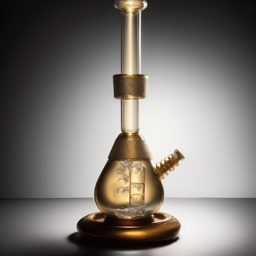When it comes to the world of smoking accessories, bongs have long been an iconic and popular choice among enthusiasts. Over the years, two primary categories have emerged: American hand-blown bongs and mass-produced imported pieces. While both types serve the same purpose of filtering and cooling smoke, they differ significantly in terms of craftsmanship, quality, and overall experience. In this blog post, we will delve into the nuances of American hand-blown bongs and mass-produced imported pieces to help you understand the key differences and make an informed choice.
Craftsmanship and Quality
One of the most noticeable distinctions between American hand-blown bongs and mass-produced imported pieces lies in the craftsmanship and quality. American hand-blown bongs are meticulously crafted by skilled glassblowers who take pride in their artistry. Each piece is a unique work of art, reflecting the creativity and expertise of the artist. These bongs are often made from high-quality borosilicate glass, renowned for its durability and heat resistance. The attention to detail, precision, and customization options in hand-blown bongs make them highly sought after by collectors. Click here to check out our collection of U.S. heady glass art.
On the other hand, mass-produced imported bongs are typically manufactured in large quantities using automated machinery. These pieces are often made from lower-grade glass, which may be more prone to breakage or heat stress fractures. While they may be more affordable and accessible, the quality and craftsmanship are usually not on par with their American counterparts. Mass-produced imported bongs prioritize efficiency and cost-effectiveness over individuality and quality.
Artistic Expression and Customization
American hand-blown bongs stand out for their artistic expression and customization options. Glassblowers have the freedom to experiment with various techniques, colors, shapes, and designs, resulting in truly unique pieces. These bongs can feature intricate patterns, mesmerizing color combinations, and even incorporate special effects like dichroic glass or fumed glass. Customization options allow users to request personalized elements, such as adding names or symbols, making the bong a reflection of their personality and preferences.
In contrast, mass-produced imported bongs lack the artistic flair and customization options of their American counterparts. Due to the automated manufacturing process, these pieces tend to follow standardized designs and limited color schemes. While some may appreciate the simplicity and uniformity, others may feel that these bongs lack the personal touch and individuality that make hand-blown bongs so appealing.
Functionality and Smoking Experience
Functionality and smoking experience are essential considerations when comparing American hand-blown bongs and mass-produced imported pieces. Hand-blown bongs are often praised for their superior functionality. Skilled glassblowers understand the dynamics of smoke diffusion and percolation, incorporating intricate percolators and diffusion chambers that enhance the smoking experience. These bongs typically provide smoother hits, better filtration, and a more enjoyable overall experience.
Mass-produced imported bongs, while functional, may not offer the same level of sophistication in terms of smoke diffusion. Due to the standardized manufacturing process, the design and functionality of these bongs may be more generic. However, they still serve the purpose of filtration and cooling, making them suitable for casual users who prioritize affordability and convenience.
Conclusion
In the world of bongs, the choice between American hand-blown pieces and mass-produced imported ones ultimately boils down to personal preferences and priorities. American hand-blown bongs shine in terms of craftsmanship, quality, artistic expression, and customization, but they often come at a higher price point. On the other hand, mass-produced imported bongs offer affordability and accessibility, but come with less uniqueness and customization.


Comments (0)